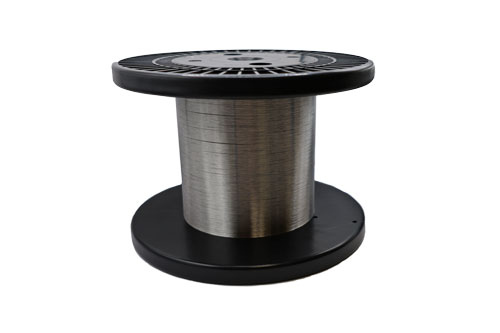
Fine wire made from precious metal alloys is used in critical applications where reliability, conductivity, dimensional accuracy and consistency are essential. Often measured in micrometers or microns (millionths of a meter), fine wire requires a sophisticated and extremely well-controlled manufacturing process. Today we’ll look at the process, key characteristics, quality considerations, and some application examples.
The Fine Wire Drawing Process
Fine wire is manufactured using a cold-working drawing process. It starts with alloy rods that will pass through several dies. Each die opening in the production line is smaller than the previous one. These openings are designed specifically to make sure that the material passing through maintains structural properties and the required diameter. The process requires tight control of several factors which include drawing speeds, die angles, and lubrication.
Critical Quality Parameters
While every manufacturing process has quality considerations, those of fine wire are extremely critical. Since wire is used in rather demanding applications, consistency is key to the success of the components made from it. This is complicated by certain uses need wire can be thinner than a human hair. Several properties need to be closely monitored as follows;
- Dimensional Consistency – wire diameter tolerances, which are often measured in fractions of a micron, directly impact several factors. These include electrical properties, mechanical performance, and assembly compatibility. Premature component failure can result from the slightest variation in dimensions. Deviation can cause resistance changes or create stress concentration points. To help ensure that the entire run meets stringent specs, manufacturers use laser micrometers and optical measurement systems.
- Straightness -wire straightness is another key factor as it affects manufacturability and performance. One challenge with straightness is that it can be difficult to measure. Often, the manufacturer and buyer have different approaches, which may cause jobs to be rejected, even when passing the manufacturer’s internal testing procedures. To help address this issue, here at DNI, we’ve developed a specific process for measuring that we share with our customers. This way, there are no surprises on delivery. Being aligned with our customers on quality testing procedures means we can both make consistent, accurate and meaningful measurements.
Surface Considerations – as with any metal manufacturing process, surface finish plays a crucial role in both performance and application suitability. Surface quality has a direct impact on electrical conductivity, bondability, and long-term reliability. The bright surface of Deringer-Ney wire provides optimal electrical contact for applications that require low contact resistance.
Fine Wire Forms
Fine precious metal wire is primarily available in two forms:
- Straight Cut Lengths – these are wire segments which are precisely cut to the customer’s requirements. They are ideal for applications where forming or shaping occurs during production. Straight cut lengths are commonly used in semiconductor test probe manufacturing, which we will discuss in detail below.
- Spooled Wire – continuous lengths to the customer’s requirements are available on spools. They are typically used in high-volume manufacturing processes that have automated feeding capabilities. Spool specifications, such as diameter or width, are customized to meet the buyer’s machinery requirements.
Applications
While fine wire is not found in as many applications as other forms, for the ones that require it – fine wire is indispensable. One popular application example is semiconductor test probes. Probes are among the more demanding uses. They require a combination of excellent conductivity, wear resistance, and dimensional stability across thousands of contact cycles. When semiconductors are tested, the probe’s wire must work in very tight spaces while maintaining straightness and accuracy, without damaging them.
Additional critical applications for fine wire precious metal alloys include medical implants and neural interfaces, aerospace electronics, precision instrumentation, and telecommunications components.
Conclusion
Manufacturing technology continues to rapidly advance toward smaller, more precise applications. Performance and quality demands will continue to increase. In response, fine wire manufacturing must also continue to evolve. The combination of intricate drawing processes, intense quality control, and specialized surface treatments means that critical wire-based components can enable next-generation technology across multiple industries.
